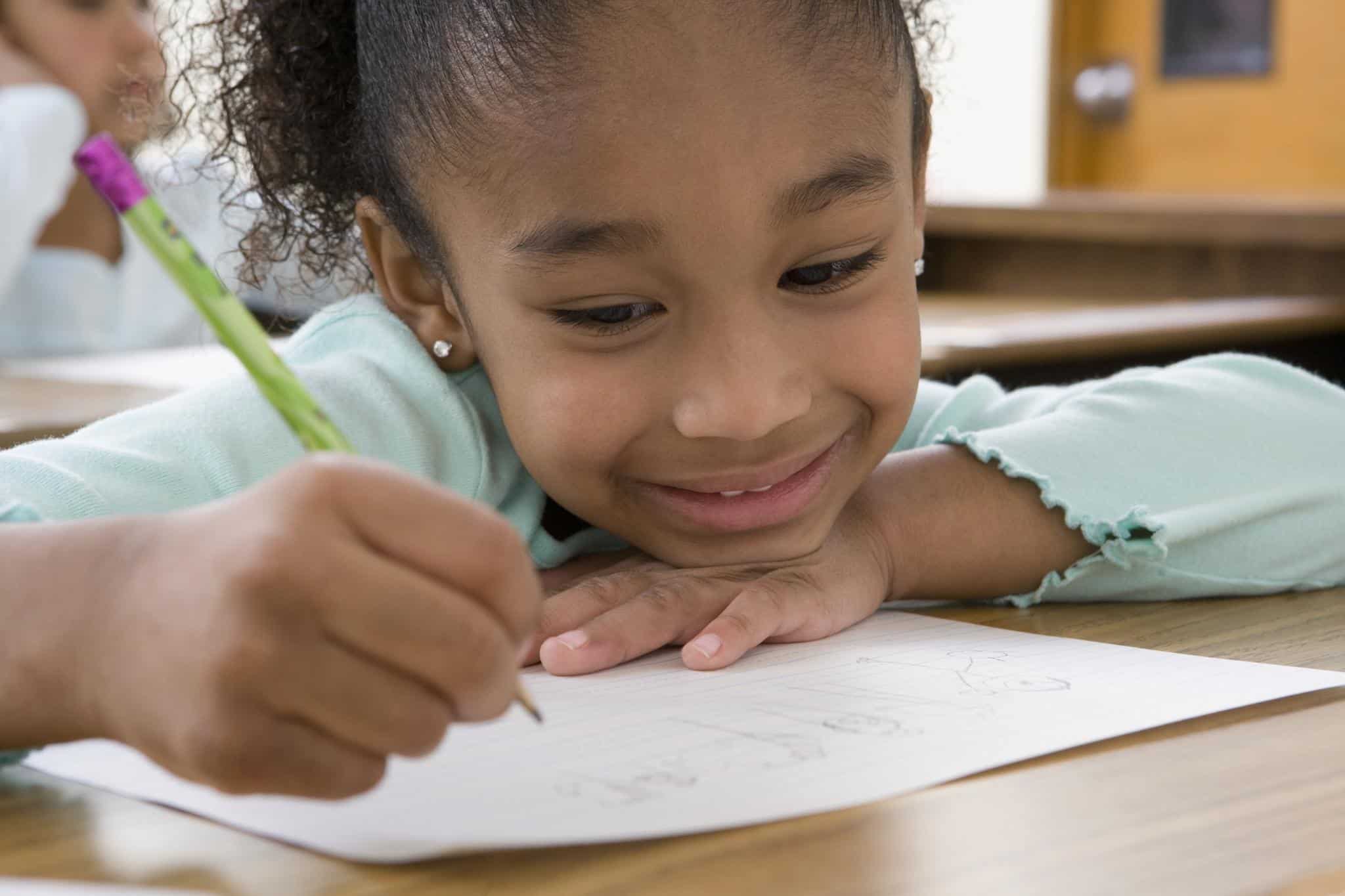Most educators want to help their struggling students succeed but sometimes, finding the right approach can be complicated. No two children are alike, and low-performing students often face a variety of challenges: they may be chronically absent, have limited family support, or struggle with a learning disability. But luckily, how we see and respond to our students can change their outcomes for the better.
The key is to view students with a growth mindset and encourage them to view learning as a process, not an inherent talent. Whether you’re working with gifted students or struggling learners, a growth mindset can help them overcome obstacles and develop a love of learning.
Read on to learn the difference between a fixed and growth mindset, as well as why the latter can lead to a healthier classroom environment. Then, discover five tips for cultivating a growth mindset in your school.
Challenges Educators Face While Teaching Under-Resourced Students

Additionally, students with learning disabilities face challenges that their peers don’t have to deal with. Over one million students with learning disorders fit the criteria for chronic absenteeism, which is defined as missing at least three weeks of school per year.[3] The loss of instruction time leads to higher dropout rates and, on average, lower grades.[4] Plus, since these students are twice as likely to be suspended as their classmates, intervention ideas for these struggling students often have to compensate for time spent out of class.[5]
But IQ alone does not equate to good or bad grades. Some students with high IQs struggle in school, and many students with lower IQs earn high grades. The way students see themselves and their learning potential can also play an essential role in their long-term achievement.[6] Students who are taught to value “looking smart” over learning are placed at a disadvantage in school. When a student’s abilities were reduced to their intelligence, for example, they were 40% more likely to lie about their scores when they made a mistake.[7]
As simple as it sounds, the way a student sees themselves and their potential can have a serious impact on their academic performance. Teaching students to have a growth mindset can not only improve their grades but also help bridge the achievement gap in education.[8] By learning about the difference between a fixed vs growth mindset, you can prepare every student in your class for lasting success.
What is a Fixed Mindset vs Growth Mindset?

A fixed mindset is defined as the belief that talents, intelligence, and abilities are determined at birth and cannot be changed.[9] People who believe that these components are fixed traits focus on appearing smart instead of learning, and they’re often discouraged when they don’t immediately grasp a concept. Fixed mindsets connect with the idea of learned helplessness in psychology, which is when people stop trying after they’ve repeatedly met negative outcomes.[10]
The definition of a growth mindset, however, is believing that talents, intelligence, and abilities are fluid and can be developed or strengthened with practice.[11] People with growth mindset characteristics often view difficult concepts as an exciting challenge, and they’re more likely to see mistakes as learning experiences. Around 40% of all students in the United States have a growth mindset, while another 40% have a fixed mindset and 20% show mixed profiles.[12]
A few classroom examples of growth mindsets include:
- A kindergartener has trouble reading so she practices it every day after school because she “knows she can do it”
- A sixth grader loves his science teacher’s astronomy unit because he learns something new every day
- A fourth grader tells her teacher that even though learning long division is hard, she thinks it’s fun because she “loves a good challenge”
Dr. Dweck’s theory of growth mindsets in education aligns with brain plasticity, which is the concept that our thoughts and actions can improve our brain functioning.[13] Every time a student made a mistake in mathematics, for example, researchers discovered that a new synapse (which helps our minds transmit information) was made in their brain.[14] By encouraging students to learn from their mistakes and seek out challenging experiences, teachers can help their students get the most out of educational experiences.
Benefits of a Fixed vs Growth Mindset in Education
On the most basic level, a growth mindset in the classroom can improve a student’s grades and standardized test scores. One study found that students who met for 90 minutes each week with a mentor trained in growth mindset practices saw a 4.5-point gain in mathematics and a 4-point gain in reading test scores.[15] If a student believes that they have a high potential for educational attainment, they’re more likely to practice often and find ways to turn their weaknesses into strengths.
A growth mindset for students can also lead to the following benefits:
- Encourages intrinsic motivation to learn [16]
- Strengthens happiness and life satisfaction [17]
- Reduces anxiety and chronic stress [18]
- Can help close the achievement gap [19]
Encouraging growth mindsets is essential for creating a classroom environment conducive to learning for all children but particularly under-resourced students. Educational researchers have found that understanding fixed and growth mindsets can not only stop plummeting grades in struggling students but also put them on the pathway to academic growth.[20] In particular, growth mindsets have been proven effective for:
- ELL students [21]
- Minority students [22]
- Immigrant students [23]
- Students from low-income families [24]
Growth Mindset Activities and Tips for Teachers
Because a child’s perspective is more likely to be shaped by their mentors, early elementary is the best time to teach students about mindsets in the classroom.[25] But whether you’re a kindergarten teacher or a high school principal, encouraging a growth mindset in your students can play a vital part in closing the achievement gap for your school.
Use these five tips to promote a growth mindset at your school, as well as avoid common mistakes that can lead to fixed mindsets:
- When teaching students, place a greater emphasis on the learning process (like practicing, asking for help, or trying new strategies) than on intellect or talent [26]
- Encourage students to practice subjects that they see as weaknesses. When a student makes a mistake, avoid saying phrases like “you tried your best” because it implies that there is no room for improvement [27]
- Growth mindsets are helpful for teachers, too. Try to view each of your students as capable of academic achievement instead of either “good” or “bad” at a subject [28]
- Instead of praising a child’s IQ or abilities, compliment how hard they’ve worked or how much they are progressing [29]
- Teach parents to see their child’s intelligence in a growth perspective, too, as family support can help children gain confidence and succeed in school [30]
Sources:
Hochanadel, A., and Finamore, D. Fixed and Growth Mindset in Education and How Grit Helps Students Persist in the Face of Adversity. Journal of International Education Research, 2015, 11(1), pp. 47-50.[1,8,10]
Hill, N. E., & Tyson, D. F. (2009). Parental involvement in middle school: a meta-analytic assessment of the strategies that promote achievement. Developmental psychology, 45(3), 740-63.[2]
The National Center for Learning Disabilities. Influence of Classroom and School Climate on Teacher Perceptions of Student Problem Behavior. Retrieved from nlcd.org: https://www.ncld.org/social-emotional-and-behavioral-challenges.[3,4,5]
Dweck. C.S. Carol Dweck Revisits the Growth Mindset. Education Week, September 2015, –. 1-3.[6,26,27]
Dweck. C.S. Mindsets: Developing Talent Through a Growth Mindset. Olympic Coach, 2009, 21(1), pp. 4-7.[7,9,11,29]
Boaler, J. Ability and Mathematics: the mindset revolution that is reshaping education. Child Development, 2013, 55(1), pp. 143-152.[12,13,28]
Dweck, C.S. Personal Communication, Teaching Mathematics for a Growth Mindset workshop. Stanford University, July 2012.[14]
Good, C., Aronson, J. & Inzlich, M. Improving Adolescents’ Standardized Test Performance: an intervention to reduce the effects of stereotype threat. Applied Developmental Psychology, 2003, 24, pp. 645-662.[15]
Aditomo, A. Students’ Response to Academic Setback: “Growth Mindset” as a Buffer Against Demotivation. International Journal of Educational Psychology, 2015, 4(2), pp. 198-222.[16,25]
Chan, D.W. Life Satisfaction, Happiness, and the Growth Mindset of Healthy and Unhealthy Perfectionists Among Hong Kong Chinese Gifted Students. Roeper Review: International Perspectives on High Ability, August 2011, 34(4), pp. 224-233.[17]
Schroder, H.S., Yalch, M.M., Dawood, S., Callahan, C.P., Donnellan, M.B., and Moser, J.S. Growth mindset of anxiety buffers the link between stressful life events and psychological distress and coping strategies. Personality and Individual Differences Journal, October 2010, 110(1), pp. 23-26.[18]
Claro, S., Paunesku, D., and Dweck, C.S. Growth mindset tempers the effects of poverty on academic achievement. Proceedings of the National Academy of Sciences of the United States of America, August 2016, 113(31), pp. 8664-8668.[19,24]
Blackwell, L.S., Trzesniewski, K.H. & Dweck, C.S. Implicit Theories of Intelligence Predict Achievement across an Adolescent Transition: a longitudinal study and an intervention. Child Development, 2007, 78(1), pp. 246-263.[20,22]
Mercer, S., and Ryan, S. A mindset for EFL: learners’ beliefs about the role of natural talent. ELT Journal, October 2010, 64(4), pp. 436-444.[21]
Anderson, S.C., and Nielsen, H.S. Reading intervention with a growth mindset approach improves children’s skills. Proceedings of the National Academy of Sciences of the United States of America, October 2016, 113(43), pp. 12111-12113.[23,30]

